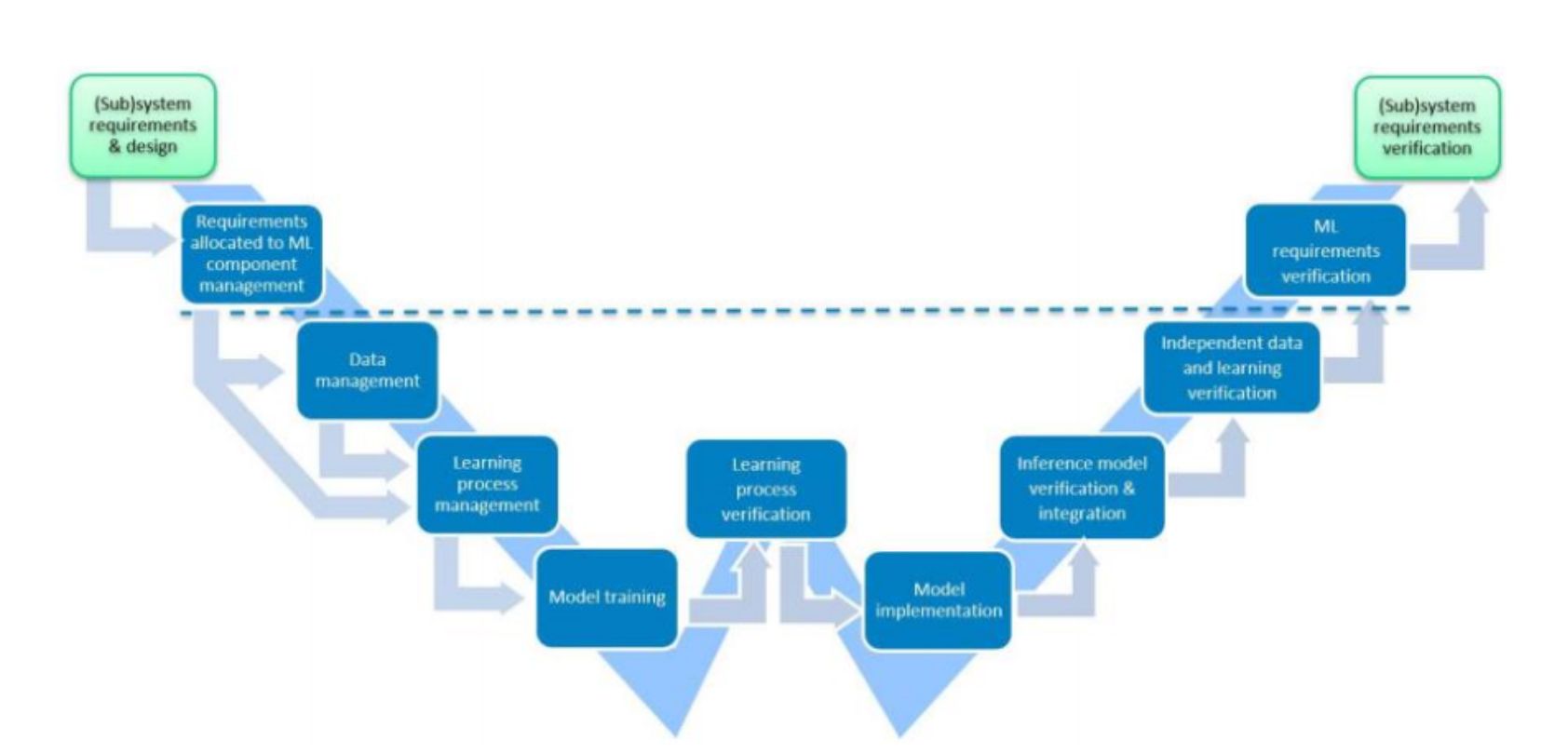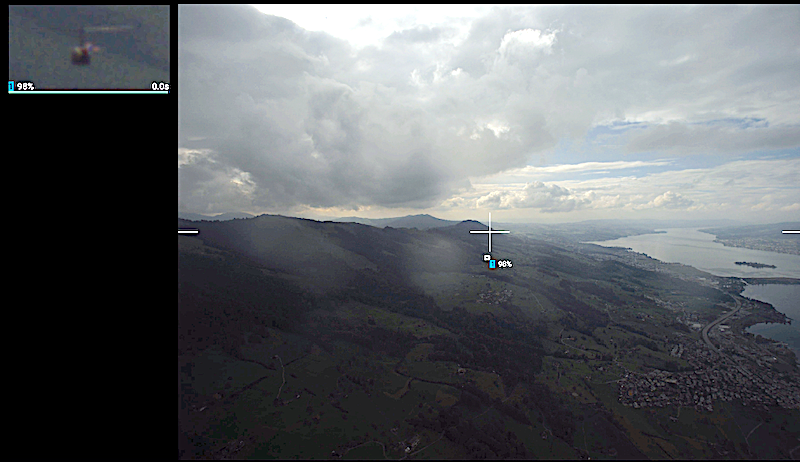- On May 18, 2021, the European Union Aviation Safety Agency (EASA) and Daedalean finished a 10-month project under their second Innovation Partnership Contract (IPC).
- The project continued to investigate the use of Machine Learning (ML)/Neural Networks (NN) in safety-critical applications.
- A 113-page public extract of the resulting report has been published on the EASA website.
- With the two Daedalean/EASA IPCs, all steps of the ‘W-shaped process’ for Learning assurance have now been investigated, opening the door to the certification of the first Level 1 (‘assistance to human’) Machine Learning / Artificial Intelligence (AI/ML)-based applications.
Köln/Zürich, May 18, 2021. Following a 10-month collaboration, EASA and Daedalean have concluded their second Innovation Partnership Contract, resulting in a 136-page report, Concepts of Design Assurance for Neural Networks (CoDANN) II. The goal of this second project was threefold: to investigate topics left out in the first project and report, to mature the concept of Learning assurance and to discuss remaining trustworthy AI building blocks from the EASA AI Roadmap. These steps pave the way to the first applications.
The first project in 2020 investigated the possible use of Machine Learning/Neural Networks in safety-critical avionics, looking in particular at the applicability of existing guidance such as ‘Guidelines for Development of Civil Aircraft and Systems’ ED-79A/ARP4754A and ‘Software Considerations in Airborne Systems and Equipment Certification’ ED-12C/DO-178C.
An essential finding of the previous EASA/Daedalean joint 140-page report (public version) was the identification of a W-shaped development process adapting the classical V-shaped cycle to machine learning applications:

Where the first CoDANN project showed that using neural networks in safety-critical applications is feasible, CoDANN II answers the remaining questions, reaching a conclusion on each of the following topics:
- Implementation and inference parts of the W-shaped process (hardware, software and system aspects), encompassing development and deployment aspects;
- Definition and role of explainability;
- Details on the system safety assessment process, concluding discussions on the integrating neural networks into complex systems and their evaluating in safety assessments.

The visual traffic detection system developed by Daedalean served as a concrete use case. Like the visual landing guidance used as an example in the first project, this complex ML-based system is representative of future AI/ML products and illustrates the safety benefit such functions may bring to future airborne applications. Points of interest for future research activities, standards development and certification exercises have been identified.
EASA already used findings from both projects in drafting the first usable guidance for Level 1 machine learning applications released for public consultation in April 2021.
“Working with the EASA AI Task Force was again a productive exercise,” said Luuk van Dijk, CEO and founder of Daedalean. “We each contributed our expertise on aviation, safety, robotics and machine learning to arrive at a result we could not have achieved without each other. The result was a 136-page report, the major part of which has been published for the benefit of the public discussion in this field”.
About Daedalean
Daedalean is building autonomous flight control software for civil aircraft of today and advanced aerial mobility of tomorrow. The Zurich, Switzerland-based company has brought together expertise from the fields of machine learning, robotics, computer vision, path planning, and aviation-grade software engineering and certification. Daedalean brings to market the first-ever machine-learning-based avionics in an onboard visual awareness system demonstrating capabilities on a path to certification for airworthiness.
About EASA
The European Union Aviation Safety Agency (EASA) is the centrepiece of the European Union’s strategy for aviation safety. Its mission is to promote the highest common standards of safety and environmental protection in civil aviation. The Agency develops common safety and environmental rules at the European level. It monitors the implementation of standards through inspections in the Member States and provides the necessary technical expertise, training and research. The Agency works hand in hand with the national authorities which continue to carry out many operational tasks, such as certification of individual aircraft or licensing of pilots.


































